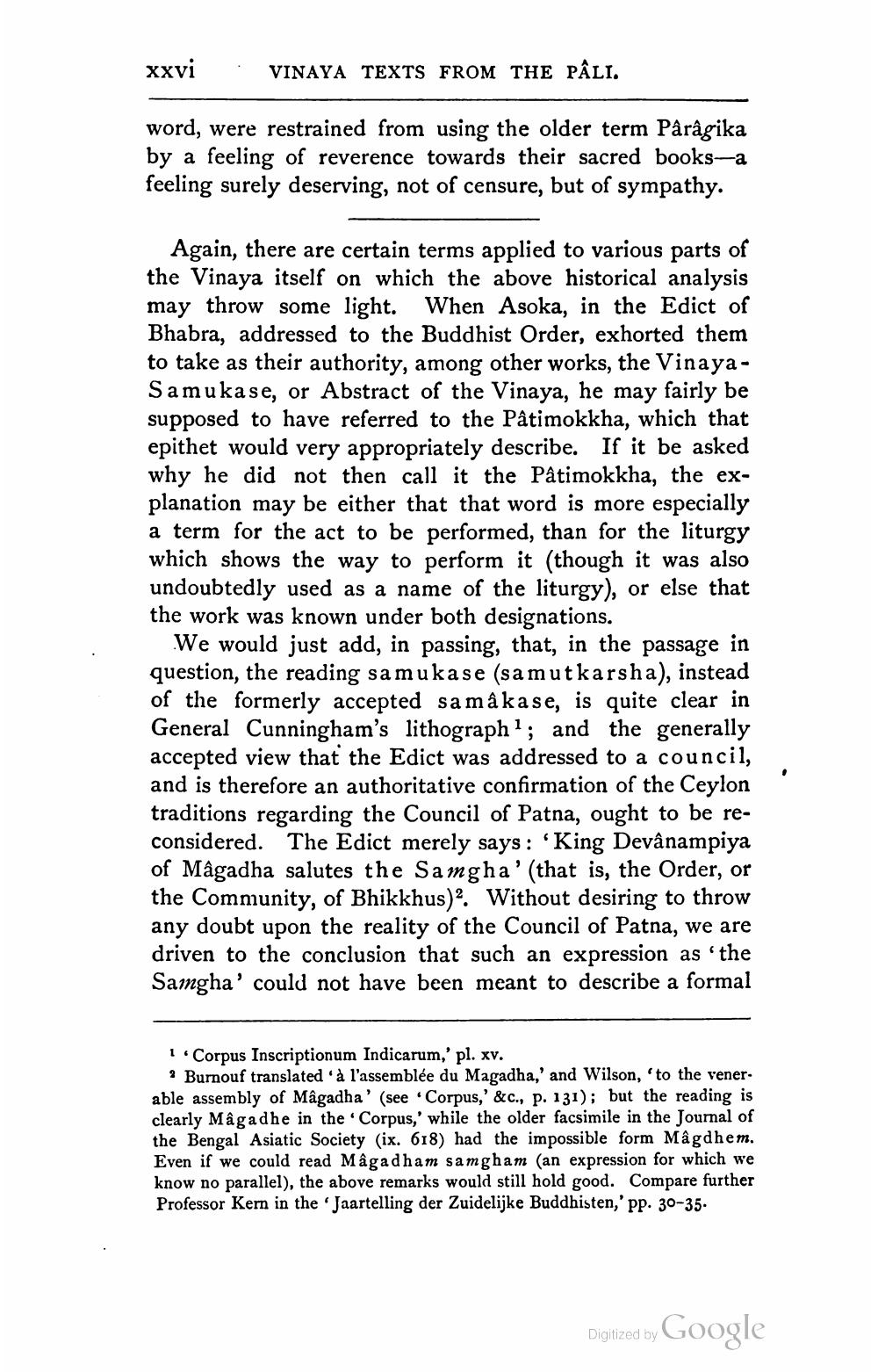________________
xxvi
. VINAYA TEXTS FROM THE PÂLI.
word, were restrained from using the older term Pârâgika by a feeling of reverence towards their sacred books-a feeling surely deserving, not of censure, but of sympathy.
Again, there are certain terms applied to various parts of the Vinaya itself on which the above historical analysis may throw some light. When Asoka, in the Edict of Bhabra, addressed to the Buddhist Order, exhorted them to take as their authority, among other works, the VinayaSamukase, or Abstract of the Vinaya, he may fairly be supposed to have referred to the Pâtimokkha, which that epithet would very appropriately describe. If it be asked why he did not then call it the Pâtimokkha, the explanation may be either that that word is more especially a term for the act to be performed, than for the liturgy which shows the way to perform it (though it was also undoubtedly used as a name of the liturgy), or else that the work was known under both designations.
We would just add, in passing, that, in the passage in question, the reading samukase (sa mutkarsha), instead of the formerly accepted sa makase, is quite clear in General Cunningham's lithograph; and the generally accepted view that the Edict was addressed to a council, and is therefore an authoritative confirmation of the Ceylon traditions regarding the Council of Patna, ought to be reconsidered. The Edict merely says: 'King Devânampiya of Mâgadha salutes the Samgha' (that is, the Order, or the Community, of Bhikkhus)?. Without desiring to throw any doubt upon the reality of the Council of Patna, we are driven to the conclusion that such an expression as 'the Samgha' could not have been meant to describe a formal
1.Corpus Inscriptionum Indicarum,' pl. xv.
· Burnouf translated à l'assemblée du Magadha,' and Wilson, 'to the vener. able assembly of Mâgadha' (see Corpus,' &c., p. 131); but the reading is clearly Mâgadhe in the Corpus,' while the older facsimile in the Journal of the Bengal Asiatic Society (ix. 618) had the impossible form Mâgdhem. Even if we could read Mâgadham samgham (an expression for which we know no parallel), the above remarks would still hold good. Compare further Professor Kern in the 'Jaartelling der Zuidelijke Buddhisten,' pp. 30-35.
Digitized by Google




